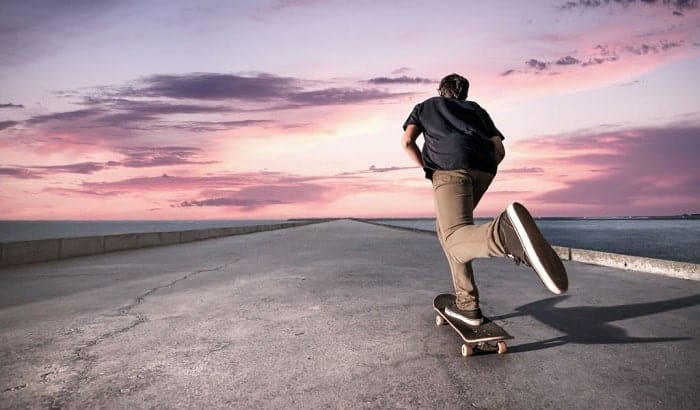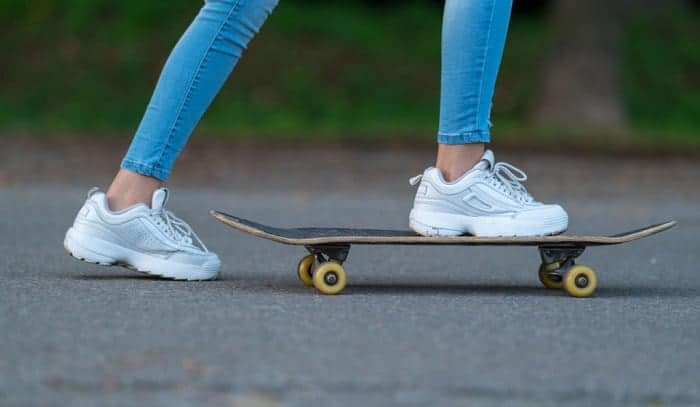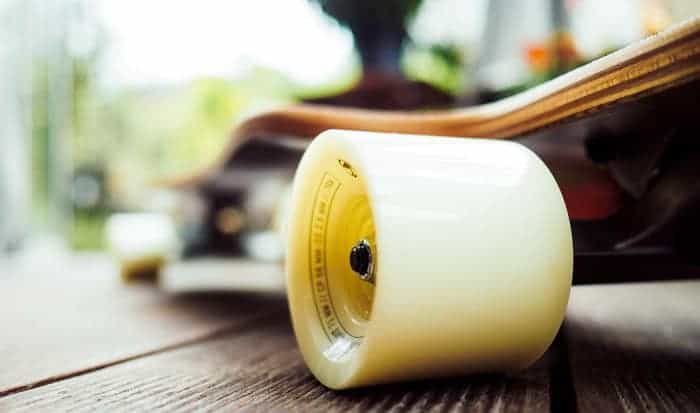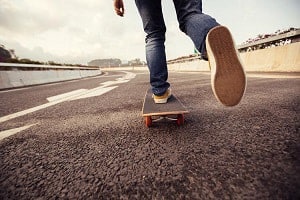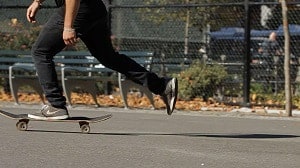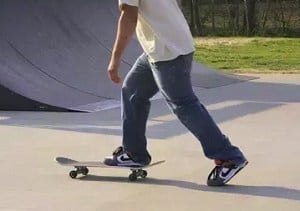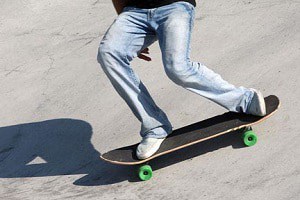Some riders tend to undermine conventional skateboards and resort to electrical longboards for speedy rides. However, that should not be the case as you can achieve many more things with your skateboard. One thing you can learn with regular boards is how to push on a skateboard.
Consider the following steps below and gain some speed on the road efficiently.
- Identify and position your front foot
- Push using your front foot
- Perform a walking motion to keep you moving
- Lift your back foot when peaking speed
Table of Contents
What You Will Need
Skateboard pushing might seem to be too easy for most riders. But let me emphasize the things you need to prepare to make sure you master this skill perfectly.
A pair of good sneakers
Wearing appropriate footwear is equivalent to riding comfortably. Not only does it give a stylish look, but it also comes with different benefits.
If you want something convenient to wear, try a slip-on sneaker. This type of shoe is easy to put on and remove. Plus, it won’t give you a hard time dealing with shoelaces, especially when cleaning.
If you want a pair of shoes with adjustable tightness, you can opt for laced sneakers. That way, you have options to loosen or tighten the shoelaces to your comfort. Laced sneakers are also more flexible in terms of styling.
Whether using a laced or slip-on sneaker, what matters the most is the sole. You cannot individually rely on the board’s grip tape for your stability as your shoes’ soles will be a factor too. Thus, choose a pair that holds on the skateboard deck firmly.
An unbusy street
Since you are gaining momentum without remote controllers, it’s best to practice pushing on a skateboard where cars come less frequently.
Unlike electric skateboards, regular skateboards do not have a remote-controlled braking feature you can tap for an immediate stop. Thus, you have to make sure you’re riding on a road long enough to let you pull over when vehicles come your way.
You might as well consider practicing on a flat road. I don’t recommend pushing a skateboard on wavy streets until you master the correct timing. Flat roads also help you identify where your speed is peaking and when to press on your skateboard again.
A smooth-running skateboard
When pushing on a skateboard, you will have to do frequent force-shifting since you’ll execute a walking motion by then. You will alternately exert force between your front foot on your board and your back foot pushing your body forward.
You don’t want to experience cracking sounds on your deck. Your skateboard will also have to deal with rapidly changing weights. So, you should check on your skateboard deck’s flexibility.
Your wheels and trucks are also a relevant factor when you push skateboards. The best skateboard trucks come with aluminum alloy that has better corrosion resistance and a longer lifespan.
The wheels you need should also have a width of around 60mm and is of PU material. This type of wheel has enough shock absorption capacity and is comfortable to ride as well.
Safety gears
Never forget to wear a set of safety equipment when doing extreme sports like skateboarding. These gears include a pair of wrist guards, knee support, a helmet, shatterproof glasses, and elbow support. Be sure to have these before getting on the road to push forward skateboarding.
A pro tip: your first few skateboard pushes might cause you to fall out of balance or miss a direction. The best thing to counter accidents like this is to practice falling safely. One of these steps is to fall on your muscles and not on your bones. Also, you can continually roll as the incident suggests to neutralize the impact all over your body.
Steps of Pushing on a Skateboard
Watching professional skateboarders push their boards can give us enough ideas. But let me share with you a detailed step-by-step procedure to do this skateboarding skill. Be sure to understand each one and expect a precise execution.
Step 1: Identify your front foot
Skateboarders may either have left or right as their dominant foot. The same is true with anyone practicing skateboarding like you.
To help you distinguish your best foot forward, try to imagine running a skateboard with one foot placed in front by instinct. You can also visualize using either foot forward to see where you will be most comfortable.
Step 2: Positioning your foot
Place your front foot on top of your skateboard deck with the tip facing the direction of the skateboard’s nose. Your back foot should be on the ground beside the back portion of the board. Take note that your foot should occupy the core of the deck.
For precision, point your shoe to the inner front bolts of the skateboard. This step will help you maneuver the skateboard better.
Also, make sure your skateboard’s direction is facing your farthest possible trajectory to avoid accidentally bumping on the gutters once you begin pushing.
Step 3: Prepare to take off and push the board
With your front foot on the skateboard deck, try to pull the skateboard a few inches back. This procedure will help you move your skateboard farther by increasing potential energy.
Push your skateboard using your front foot as firmly as you can. Ensure that your body is facing the same direction as your board to avoid displacement or falling off your skateboard.
Step 4: Walk with your skateboard
Your skateboard will reach a peak speed for every push you do. And as soon as you feel slowing down, you would have to push it again to create momentum.
This procedure will require more mechanical work with your back foot. As soon as your board slows down, use your back foot to kick the ground in a backward direction. At the same time, push your skateboard as you transfer the force from your back foot to the skateboard. It’s like walking but only with a skateboard on your other foot this time.
Step 5: Gliding
You would not have to kick on your skateboard too frequently, especially when riding on a slightly downward sloping road if you feel you’ll take enough time before pushing on your skateboard again, learn how to rest your back foot behind your front.
In this step, you will also have to practice the correct timing of pushing on your skateboard to keep you from putting too much pressure on your legs.
Conclusion
Electric skateboards are most people’s options when they’re into some speed. But if you have a regular skateboard with you, not only will you learn many tricks. You’ll also be more physical about these boards, like practicing how to push on a skateboard.
Keep the tips I have shared with you as you prepare for more skateboarding skills soon. Stay safe and continue practicing your timing, positioning, and posture. Did you like this article? Leave your thoughts in the comments section.

I am Michael, and I have been enjoying this fun sport for seven years. And nothing is better than having a community to share our passion for those thrilling tricks. I am ready to tell you all I know about skateboarding, showing you how to choose a good board and trick to start and how the practice goes. Stay tuned!


